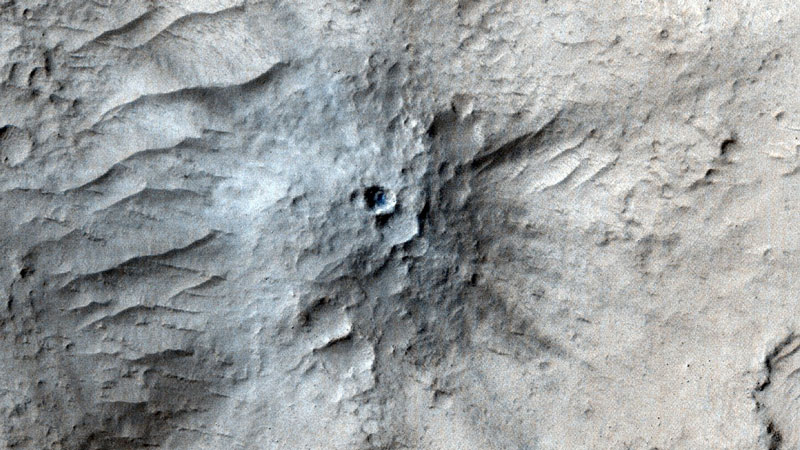A fresh study of NASA scientists revealed the unusually high conductivity of seismic waves in Mantei Mars. Artificial intelligence helped this, which analyzed tens of thousands of pictures of the surface of the Red Planet in search of fresh shock craters from meteorites. A comparison of the InSight automatic station with the location of shock craters made it possible to detect a strange phenomenon – the accelerated passage of seismic waves in the bowels of Mars.

Fresh shock crater in the Cerberus Fossae region. Source of images: NASA
Today, tens of thousands of high -quality images of the moon and Mars are accumulated, which allows us to talk about the introduction of planetology into the era of big data. In such a situation, it is logical to use artificial intelligence (machine learning) to process visual information, which can conduct an initial analysis of the pictures. In NASA, this technology was first successfully used to identify fresh shock craters on Mars.
Scientists were looking for shock craters formed during the work of the InSight station – the first alien seismic tool created to study the structure of Mars. Basically, InSight recorded seismic waves that occur due to natural deformations of the subsoil of the Red Planet, but the falls of meteorites have become a kind of bonus that significantly expanded the array of collected data.
Insight sensors recorded over 1300 Mars of Mars. Artificial intelligence, in turn, found 123 fresh shock crater within a radius of 3,000 km from the station. Of these, 49 coincided with the cases of Marseome -compulsions registered by Insight. Among others, a shock crater with a diameter of 21.5 m in the area of Cerberus Fossae, the seismic effect of which was also recorded in Insight data was detected. However, the problem arose here: according to the readings of the station, this shock crater was supposed to be much further from the place of its real location (1640 km from the station).

Tender seismic sensor of the InSight station
«We previously thought that the energy found in the vast majority of seismic events quickly fades in the Martian Kore, ”explained the member of the Insight team Konstantinos Chalalambous from the imperial college of London. “This discovery shows a deeper and fastest way – let’s call it a seismic highway – through a mantle that allows earthquakes to reach more distant regions of the planet.”
This discovery makes you revise all the data collected by Insight and the research results based on them. New conclusions show that scientists could incorrectly interpret some data, and the structure of the Red Planet may differ from the ideas that have existed so far.